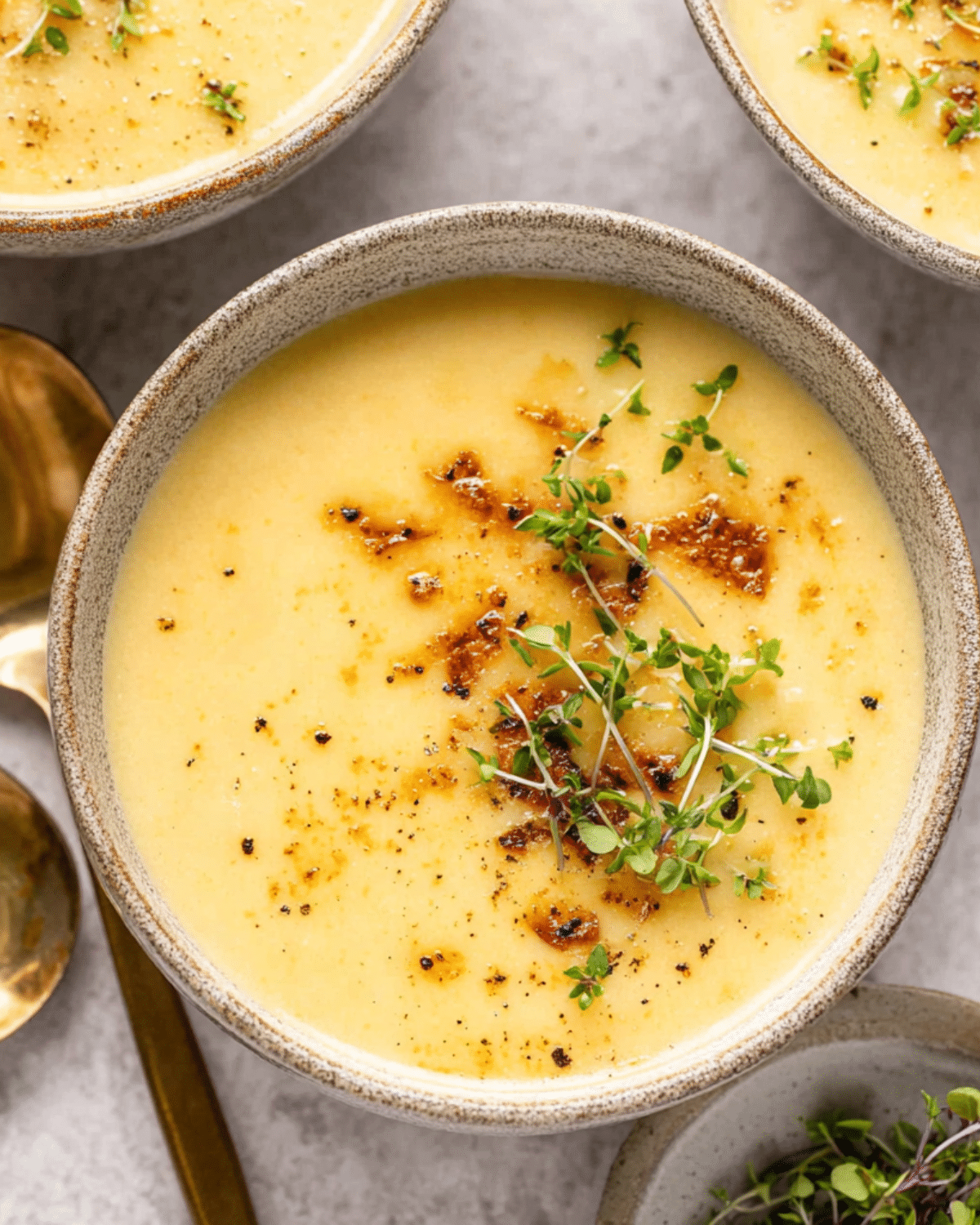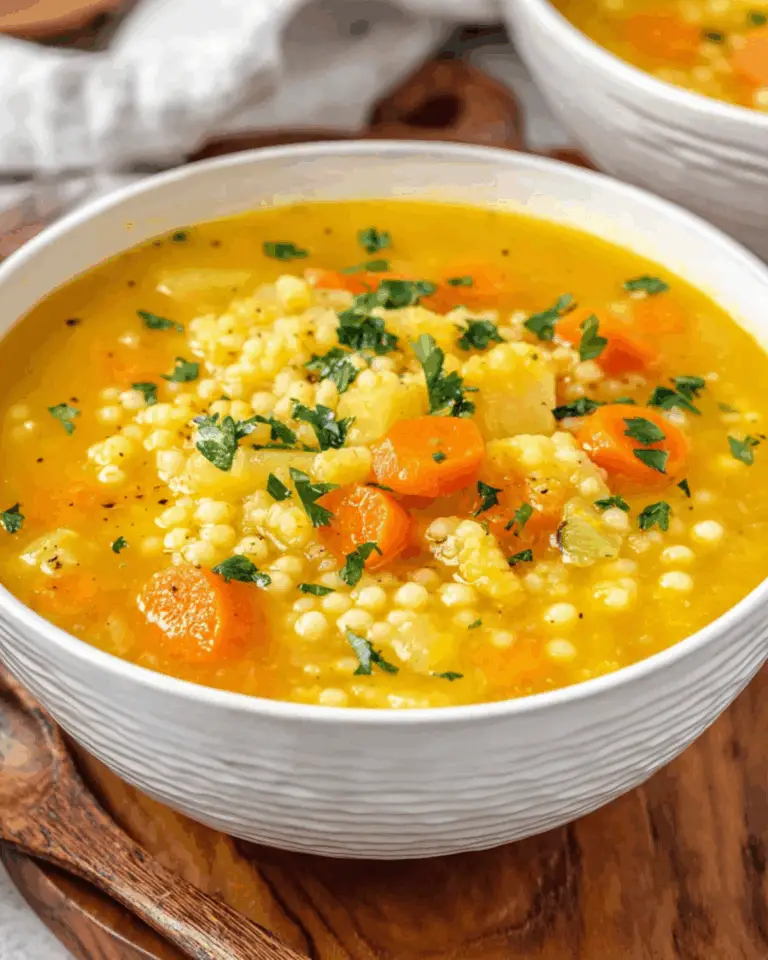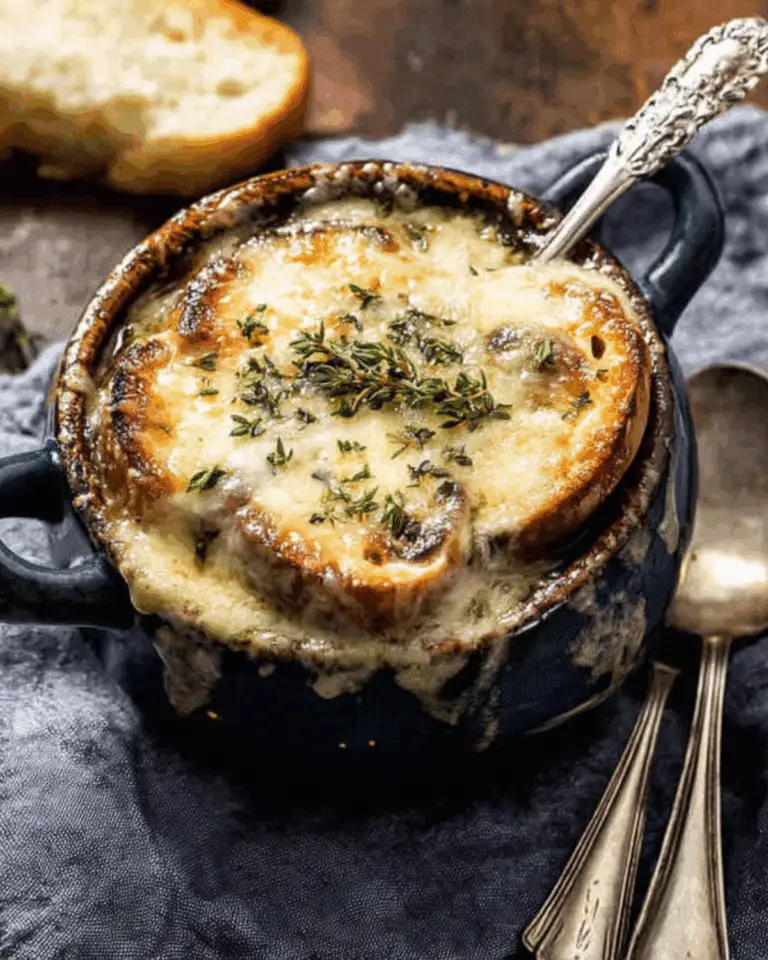When the chill of fall creeps in and the days get shorter, nothing hits the spot like a warm, hearty bowl of creamy potato soup. This classic comfort food wraps you in coziness with its velvety texture, rich flavor, and soul-satisfying warmth. Whether you’re serving it as a main course or a side, creamy potato soup is an all-season favorite that’s especially perfect for cold nights and family dinners. Looking for inspiration? Try our creamy mushroom soup recipe to expand your comfort food collection.
In this article, you’ll learn why creamy potato soup is a favorite across generations, the ingredients that make it shine, and how to craft a perfect bowl at home. We’ll also cover delicious variations, pro tips, storage tricks, and FAQs to ensure your soup always turns out rich and delicious.
JUMP TO
Table of Contents
What Makes Creamy Potato Soup So Comforting?
The Origin and Popularity of Potato Soup
Potato soup has long been a staple in kitchens around the world. Its roots trace back to humble beginnings when resourceful cooks used pantry basics—potatoes, broth, and milk—to create a hearty, filling meal. Over time, the recipe evolved into regional favorites like German potato soup, Irish potato leek soup, and Southern-style loaded baked potato soup. The creamy version gained popularity in the U.S. thanks to its rich texture and ability to satisfy a crowd with minimal ingredients.
Why Creamy Versions Are a Fall Favorite
There’s something undeniably comforting about thick, creamy soups during the colder months. Creamy potato soup checks all the boxes: it’s warm, filling, and easy to customize. With its smooth texture and balanced flavors, this soup bridges the gap between indulgence and nourishment. Plus, it uses ingredients you likely already have on hand—milk, broth, butter, and potatoes—making it a perfect last-minute dinner.
Cream-based soups also retain heat longer than broth-based soups, making them ideal for slow sips by the fire or reheating the next day. The creaminess feels indulgent, but with the right tweaks, you can keep it relatively light too.
Classic vs. Modern Takes on Creamy Potato Soup
Traditional potato soup typically includes a roux (flour and butter) for thickening, whole milk or cream, and simple seasoning. Today’s home cooks, however, love to innovate. You’ll find recipes with shredded cheddar, bacon crumbles, green onions, or even spicy chipotle for an extra kick. Some opt for Greek yogurt instead of cream for a tangy twist, or swap dairy altogether in vegan versions.
Modern cooking methods—like immersion blending or slow cookers—also make it easier than ever to achieve restaurant-level results at home. You can start with simple pantry items and elevate the dish with thoughtful toppings and a touch of creativity.
Don’t miss our easy creamy tomato soup for another smooth and savory option that’s great for cozy nights in.
Best Ingredients for Rich and Creamy Potato Soup
Crafting a delicious bowl of creamy potato soup starts with the right ingredients. Each component plays a role in delivering the ideal consistency, flavor depth, and mouthfeel that make this dish a comfort food icon. Let’s break down what to use and why it matters.
Which Potatoes Work Best for Texture?
The type of potato you use can make or break your soup’s final texture. For a perfectly creamy finish, russet potatoes are the top choice. Their high starch content helps break down easily when cooked, leading to a silky consistency that blends well.
If you prefer a slightly chunkier version, Yukon Gold potatoes offer a buttery flavor and hold their shape better while still blending smoothly. Avoid waxy potatoes like red or fingerling—they’re better suited for roasting than pureeing.
For a fun twist on potato dishes, check out our loaded scalloped potatoes recipe—it uses similar ingredients in a whole new way.
Must-Have Dairy: Heavy Cream, Milk, or Half-and-Half?
To achieve that signature creamy texture, dairy is essential. The most commonly used options are:
| Dairy Type | Texture Impact | Flavor Profile |
|---|---|---|
| Heavy Cream | Thick, rich, ultra-creamy | Deep, indulgent flavor |
| Half-and-Half | Creamy but lighter | Balanced richness |
| Whole Milk | Lightest option | Mild and slightly sweet |
Heavy cream is the go-to if you’re aiming for maximum indulgence. Half-and-half offers a good balance for everyday meals. If you’re watching calories, whole milk will do the job, especially if paired with cheese for richness.
Seasonings, Broth & Optional Flavor Boosters
A flavorful soup begins with the base—broth. You can use either low-sodium chicken broth or vegetable broth to control salt levels and suit dietary needs. Then come the seasonings.
- Garlic and onion: Essential for depth and aroma
- Salt & cracked black pepper: Always season in layers
- Thyme, parsley, or rosemary: Fresh herbs brighten the richness
- Bay leaf: Adds subtle earthiness when simmered
For next-level flavor, consider adding:
- A dash of smoked paprika
- A spoonful of sour cream for tang
- Pepper jack cheese for a spicy kick
Craving a meatier bite? Don’t miss our chicken pot pie soup recipe that combines creamy base flavors with hearty proteins and veggies.
What About Cheese?
Shredded sharp cheddar is a classic choice and melts smoothly, giving the soup a deliciously cheesy finish. White cheddar, gouda, or even smoked mozzarella are great variations for deeper complexity.
When stirring in cheese, do so gradually off heat to avoid clumping or a grainy texture. And always grate fresh cheese from the block—it melts better than pre-shredded varieties.
Looking for more savory, cheesy sides? Discover great ideas like this copycat Chick-fil-A mac and cheese that pairs wonderfully with potato soup.
How to Make Creamy Potato Soup at Home
Making creamy potato soup from scratch is easier than you might think. With just a few pantry staples and a little technique, you can create a velvety, restaurant-style bowl of soup right in your own kitchen. Here’s how to get it just right.
Step-by-Step: From Sauté to Blend
To achieve the right flavor and thickness, follow these simple steps:
- Sauté the base vegetables
In a large stockpot over medium-high heat, melt 3 tablespoons of butter and sauté diced onion, celery, carrots, and minced garlic for 2–3 minutes. Stir frequently until onions become translucent and fragrant. - Add potatoes and broth
Peel and dice 6 russet potatoes, then add them to the pot along with salt and black pepper. Cook for 5 minutes to release the starch. Pour in 8 cups of low-sodium chicken broth (or vegetable broth for a vegetarian version) and bring to a boil. Simmer until potatoes are fork-tender, about 10 minutes. - Create the roux
In a separate bowl, mix 3 tablespoons of flour with 1 cup of milk to form a smooth slurry. Gradually stir this mixture into the soup, then add 1 cup of heavy cream for extra richness. Cook another 5 minutes, stirring occasionally. - Blend until smooth
Use an immersion blender right in the pot or transfer the soup in batches to a blender. Blend carefully (leave the vent open if using a blender lid) until smooth and creamy. - Stir in cheese and finish
Turn off the heat and stir in 1½ cups of freshly grated cheddar cheese. Mix until fully melted and adjust seasoning to taste. Your soup is now ready to serve!
Want a shortcut version for busy nights? Don’t miss our easy potsticker soup method—quick, flavorful, and minimal cleanup.
Pro Tips for Creamy Texture Without Curdling
- Temper dairy ingredients: Avoid adding cold milk or cream directly into boiling soup. Bring them to room temperature or temper by slowly mixing some hot soup into the dairy first.
- Low and slow when adding cheese: High heat can cause separation. Always stir in cheese after removing the soup from the burner.
- Control your blender time: Over-blending can make the soup gluey. Stop when the texture is smooth but still naturally thick.
Need more tricks for achieving creamy perfection? Check out our restaurant-style egg drop soup for silky broth techniques you can also apply to potato soup.
How to Avoid Watery or Gritty Soup Results
- Too thin? Let it simmer longer or add more roux. You can also mash in a few unblended potato chunks.
- Too thick? Loosen with extra broth or milk a little at a time.
- Gritty texture? Usually caused by pre-shredded cheese (which contains anti-caking agents). Use fresh cheese and stir slowly off heat.
By mastering these tips, you’ll never settle for bland or lumpy potato soup again. Every bowl will be creamy, smooth, and bursting with homemade flavor.
Variations to Elevate Your Creamy Potato Soup
Once you’ve mastered the base recipe, you can easily make this soup your own with a few creative upgrades. Whether you’re going meat-heavy or dairy-free, there’s a version for every preference.
Make It Meaty: Bacon, Ham, or Chicken Add-Ins
For a heartier, protein-rich meal, try adding:
- Crispy bacon: Cook first and reserve some fat for added flavor
- Shredded rotisserie chicken: Stir in after blending
- Diced ham: Adds a smoky, salty bite
These proteins pair perfectly with the rich base and help transform a side dish into a main course.
Vegetarian & Vegan Alternatives That Work
To make a vegetarian version, simply use vegetable broth instead of chicken broth. For a vegan version:
- Substitute olive oil or vegan butter
- Use unsweetened plant-based milk (like oat or cashew)
- Skip the cheese or use a vegan cheese melt
Don’t miss our Italian penicillin soup recipe for another nourishing vegetarian-friendly option.
Loaded Baked Potato Soup Style Upgrades
Take your creamy potato soup to the next level by loading it like a baked potato. Try these mix-ins and toppings:
- Sour cream swirl
- Extra sharp cheddar
- Green onions or chives
- Crumbled bacon
- Hot sauce or chipotle drizzle
Add all your favorite baked potato fixings and you’ve got a flavor bomb in a bowl.
How to Serve and Store Creamy Potato Soup
Ideal Toppings: Cheese, Herbs, Crunchy Bits
Toppings turn a simple soup into a showstopper. Here are favorites:
| Topping Idea | Adds… |
|---|---|
| Cheddar or Parmesan | Salty richness |
| Fresh herbs (thyme) | Bright, earthy notes |
| Bacon bits | Crunch and umami |
| Fried garlic chips | Texture and aroma |
Set out a toppings bar and let everyone customize their bowl.
Pairing Ideas: Bread, Salads & Light Mains
Serve alongside:
- Garlic bread or sourdough toast
- A crisp Caesar or spinach salad
- Grilled cheese sandwiches
- Roasted vegetables
It’s also a great starter for holiday dinners or potlucks.
Storing, Reheating, and Freezing Tips
- Refrigerate in an airtight container for up to 4 days
- Freeze for up to 3 months (cool completely first)
- Reheat on low heat, stirring frequently to prevent separation
Add a splash of broth or milk while reheating to restore creaminess.
Looking for more freezer-friendly soups? Try our chicken tortellini soup—it’s hearty, delicious, and stores beautifully.

FAQs About Creamy Potato Soup
How can I make creamy potato soup gluten-free?
Yes! Just swap the flour for cornstarch or gluten-free flour blend when making the roux. Always check labels on broth and cheese to ensure they’re certified gluten-free.
Can I freeze creamy potato soup without losing texture?
You can, but texture may slightly change. To preserve creaminess, blend fully before freezing, avoid adding dairy until reheating, and stir well when thawed.
What’s the best cheese for creamy potato soup?
Sharp cheddar is most popular, but gouda, white cheddar, and even pepper jack work well. Always use freshly shredded cheese for smooth melting.
How long does homemade potato soup last in the fridge?
It stays fresh for up to 4 days. Keep it in a sealed container and reheat gently over the stove for best results.
Conclusion: Make Creamy Potato Soup Your Next Go-To Recipe
There’s a reason creamy potato soup stands the test of time. It’s inexpensive, filling, and endlessly customizable. Whether you’re serving it plain or loading it up with toppings, it’s the kind of comfort food that brings people together. So grab your stockpot, pick your toppings, and enjoy every creamy, soul-warming spoonful.
Don’t miss our roasted butternut squash soup recipe for another cozy fall favorite worth trying next.
PrintCreamy Potato Soup
A rich and creamy potato soup made with russet potatoes, cheddar cheese, and pantry staples. This easy 30-minute recipe is comforting, customizable, and perfect for chilly days.
- Prep Time: 10 minutes
- Cook Time: 20 minutes
- Total Time: 30 minutes
- Yield: 6 servings
- Category: Soup
- Method: Stovetop
- Cuisine: American
- Diet: Vegetarian
Ingredients
- 3 tablespoons butter
- 1 yellow onion, diced
- 3 celery stalks, chopped
- 1 tablespoon minced garlic
- 2 whole carrots, diced
- 6 russet potatoes, peeled and diced
- 1 teaspoon salt (more to taste)
- 1/2 teaspoon cracked black pepper
- 8 cups low sodium chicken broth (or vegetable broth)
- 1 cup heavy cream or fat-free half and half
- 1 cup milk
- 3 tablespoons flour
- 1 1/2 cups freshly grated cheddar cheese
- Optional toppings: cooked and crumbled bacon, fresh herbs, additional cheese, green onions
Instructions
- In a large stock pot, melt butter over medium-high heat. Add onion, celery, carrots, and garlic. Cook for 2–3 minutes until onions are translucent.
- Add diced potatoes, salt, and pepper. Cook for 5 minutes to release starch.
- Pour in broth and bring to a boil. Simmer for 10 minutes or until potatoes are fork-tender.
- In a small bowl, whisk flour into milk to form a slurry. Gradually stir into soup along with heavy cream. Cook for 5 more minutes.
- Blend soup with an immersion blender or in batches in a regular blender until smooth and creamy.
- Turn off heat and stir in shredded cheddar cheese until fully melted.
- Taste and adjust seasoning. Serve hot with optional toppings.
Notes
- Use freshly grated cheese for a smoother melt and better flavor.
- Temper cream and milk before adding to hot soup to avoid curdling.
- For chunky soup, blend only half of the mixture and leave the rest as-is.
- You can substitute the flour with cornstarch for a gluten-free version.
- Store leftovers in the fridge for up to 4 days or freeze for up to 3 months.
Nutrition
- Serving Size: 1 bowl
- Calories: 378 kcal
- Sugar: 8 g
- Sodium: 1804 mg
- Fat: 12 g
- Saturated Fat: 7 g
- Unsaturated Fat: 3 g
- Trans Fat: 0 g
- Carbohydrates: 52 g
- Fiber: 6 g
- Protein: 16 g
- Cholesterol: 37 mg








